
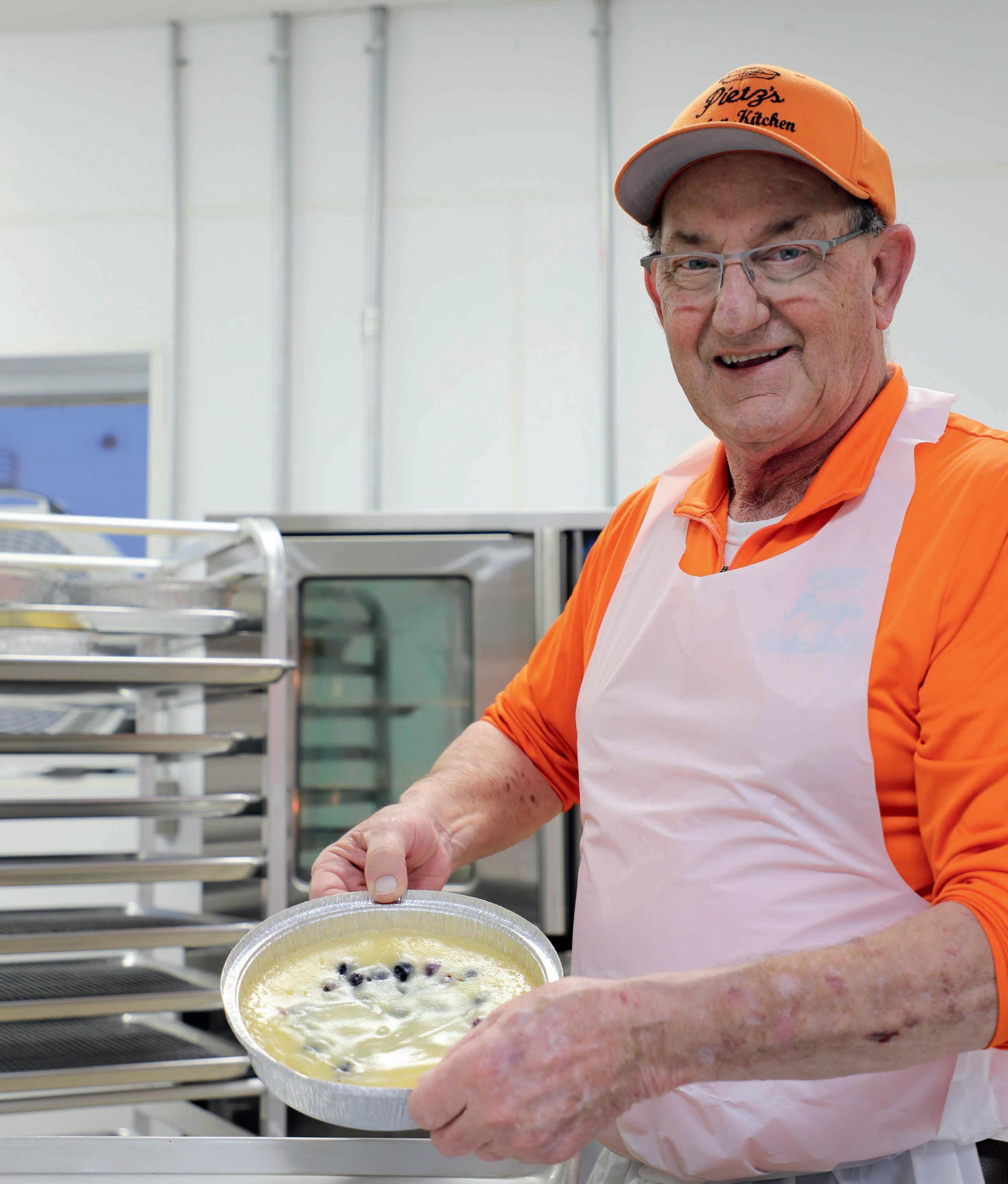
Kuchen Country German Delicacy Celebrates 25 Years as South Dakota’s Official Dessert Pages 8-9
Swimming Safely Pages 12-13



Kuchen Country German Delicacy Celebrates 25 Years as South Dakota’s Official Dessert Pages 8-9
Swimming Safely Pages 12-13

Robert Raker CEO/GM
As we head into another South Dakota summer, many of us look forward to the familiar joys of the season—backyard barbecues, trips to the lake, and the long daylight hours that stretch into warm evenings. But while summer brings plenty to enjoy, it also signals something more serious: the start of wildfire season.
At West River Electric, we’re paying close attention to the increasing wildfire risks facing our region. These risks aren’t limited to states like California or Oregon anymore— they’re reaching across the country, including right here at home. Climate conditions, extended periods of drought, and high winds all contribute to a more volatile environment where the threat of wildfires becomes more real each year.
You may have seen the term Public Safety Power Shutoffs (PSPS) in the news, often associated with utilities on the West Coast. These are precautionary measures some utilities use to shut off electricity in high-risk areas during dangerous weather conditions to prevent their infrastructure from sparking fires. While that may be necessary in some regions, it’s not a step we’ve taken here—and not something we anticipate using as a widespread preventive strategy.
When we have implemented power shutoffs in the past, they’ve been limited, targeted, and always coordinated directly with first responders in active fire zones—not broad, system-wide outages. That’s a key distinction. We believe in using every tool available responsibly, and only when absolutely necessary for safety.
But it’s not just wildfires themselves that pose a risk—it’s the ripple effects they create across industries. One of the lesser-known
but growing challenges is the impact on insurance for electric utilities. As wildfire threats increase, insurers are pulling back. Coverage is becoming not only more expensive, but in some cases, entirely unavailable. That leaves rural utilities like ours with a difficult task: finding ways to keep costs manageable while ensuring we’re still covered and financially secure in the event of a disaster.
That’s why we’re being proactive—not just operationally, but also through advocacy. We’re making our voice heard at the state and federal levels, speaking directly with lawmakers and regulators to push for policies that recognize the realities of rural electric cooperatives. 12240900
Operationally, our efforts are ongoing year-round—not just when fire season begins. We’re investing in undergrounding key distribution lines where feasible, enhancing our vegetation management programs, upgrading critical infrastructure, and implementing advanced monitoring technologies to detect risks earlier. Every step we take is guided by a commitment to safety, reliability, and stewardship of the environment and the communities we serve.
And while we’ll continue these efforts behind the scenes, we’re also hoping—like many of you—for a summer season with enough rainfall to keep wildfire conditions in check. That’s the best-case scenario, and one we’re always rooting for.
In the meantime, you can count on West River Electric to stay vigilant and prepared. We’ll continue to do what we’ve always done: keep the power flowing, keep you informed, and do everything we can to protect our community through the summer and beyond.
Let’s stay safe—and stay connected.
Robert Raker | CEO

(USPS No. 675-840)
Our Mission:
To serve our members’ best interest.
Our Vision:
We will be a high performing co-op.
Our Values:
1. Safety 2. Accountability
3. Integrity 4. Innovation
5. Commitment to Community
This institution is an equal opportunity provider and employer.
Board President: Andy Moon
Board of Directors
Stan Anders – Vice President
Jamie Lewis – Secretary
Chuck Sloan – Treasurer
Larry Eisenbraun
Peter Blake
Marcia Arneson
Steven Edoff
Sue Peters
CEO and General Manager:
Robert Raker –robert.raker@westriver.coop
Editor Amanda Haugen –amanda.haugen@westriver.coop
WEST RIVER ELECTRIC COOPERATIVE CONNECTIONS is the monthly publication for the members of West River Electric Association. Members subscribe to Cooperative Connections as part of their electric cooperative membership for $6 a year. West River Electric Cooperative Connections purpose is to provide reliable, helpful information to electric cooperative members on matters pertaining to rural electrification and better living. Nonmember subscriptions are available for $12 per year. Periodicals Postage paid at Wall, S.D., and at additional mailing offices. Postmaster: Send address changes to West River Electric Cooperative Connections, PO Box 412 , Wall, SD 57790-0412.
Other correspondence to: West River Electric Cooperative Connections, 3250 E Hwy 44, Rapid City, SD 57703; telephone (605)393-1500, Exts. 6564, 6531 or 6522; fax (605)393- 0275; e-mail amanda.haugen@westriver.coop.


Specialist
Wildfires are no longer confined to the western United States. Traditionally associated with dry, fire-prone regions like California, wildfires are now affecting areas in the Midwest and even parts of the Southeast. This shift is driven by rising temperatures, prolonged droughts and changing weather patterns, which are creating conditions ripe for fires in regions that historically saw fewer of them. As a result, more communities are now facing growing threats from wildfires, prompting a need for broader awareness and preparedness nationwide. 1219000
West River Electric is working to reduce the risk of wildfires throughout our service territory. Through regular vegetation management and grid maintenance and hardening practices, we are proactively working to reduce risks and improve the reliability of our local system.
As a member of West River Electric, there are steps you can take to prevent wildfires.
1. Properly extinguish campfires. Always douse your campfire with water, stir the ashes and ensure everything is cool to the touch before leaving the area.
2. Don’t burn on windy days. Avoid outdoor burning when it’s windy or dry, as embers can easily spread and ignite surrounding areas.
3. Clear vegetation and debris. Maintain a defensible space around your home by removing dry leaves, dead branches and other flammable materials.
4. Use equipment safely. Tools like lawnmowers or chainsaws can spark fires. Use them during cooler times of the day and keep them in good working condition.
5. Follow local fire regulations. Always check for burn bans or restrictions in your area before burning anything or using open flames outdoors.
For more information on wildfire prevention and preparedness, visit www. redcross.org.
Source: American Red Cross
Don’t let mosquitoes and ticks ruin your carefree summer fun. As we spend more time outdoors for activities like camping, hiking, swimming, picnicking and barbecuing, there is a greater chance of getting bitten by mosquitoes and ticks. According to the American Mosquito Control Association there are 176 known species of mosquito in the U.S. – putting Americans at risk from coast to coast. And while mosquitoes may be the most obvious detractor from summer fun – ticks are silent but dangerous. Most active during warmer months (April to September), it is especially important to be vigilant of blacklegged ticks, more commonly known as deer ticks, especially if you live in the Northeast, Mid-Atlantic, North-central or Northwest.
Mosquitoes and ticks are more than just itchy and annoying – if infected, these pests can pose a major health risk to people by possibly transmitting diseases. Follow these tips to prevent mosquito and tick bites this summer:
• Use insect repellents containing DEET (N, N-diethyl-meta-toluamide) when you are outdoors. Be sure to follow the directions on the package.
• Consider staying indoors at dusk and dawn, when mosquitoes are most active.
• Wear long-sleeved shirts and long pants and tuck your pant legs into your socks or boots.
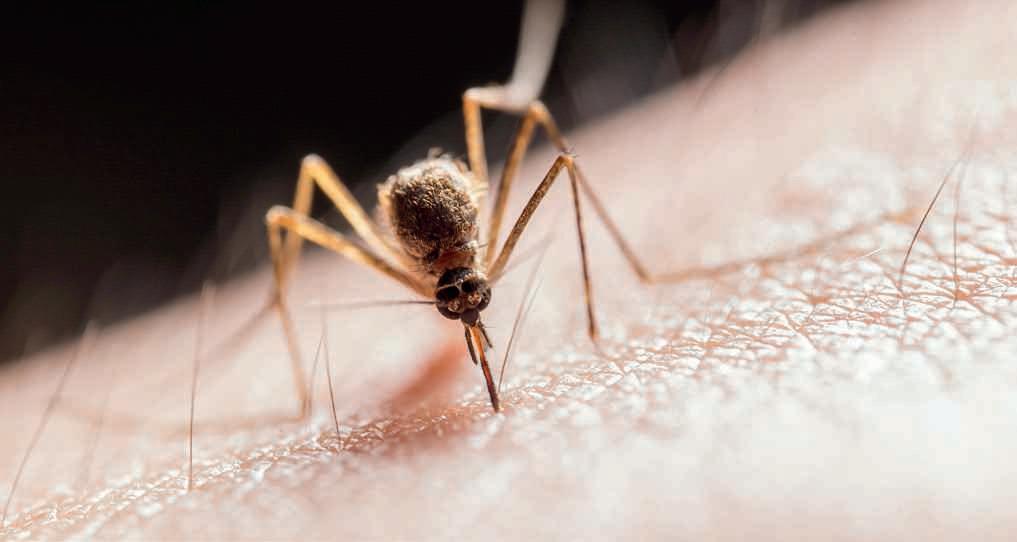
• Use a rubber band or tape to hold pants against socks so that nothing can get under clothing.
• Tuck your shirt into your pants. Wear light-colored clothing to make it easier to see tiny insects or ticks.
• When hiking in woods and fields, stay in the middle of trails. Avoid underbrush and tall grass.
• If you are outdoors for a long time, check yourself several times during the day. Especially check in hairy areas of the body like the back of the neck and the scalp line.
• Inspect yourself carefully for insects or ticks after being outdoors or have someone else do it.
• If you have pets that go outdoors, spray with repellent made for their breed/type. Apply the repellent according to the label and check your pet for ticks often.
• Get rid of mosquito breeding sites by emptying sources of standing water outside of the home, such as from flowerpots, buckets and barrels.

“Never Touch a Power Line!!”
Kashton cautions readers not to touch power lines. Thank you for your picture, Kashton! Kashton’s parents are Brad and Brooke Schecher from Bison, S.D.
Kids, send your drawing with an electrical safety tip to your local electric cooperative (address found on Page 3). If your poster is published, you’ll receive a prize. All entries must include your name, age, mailing address and the names of your parents. Colored drawings are encouraged.
Ingredients:
2 pork steaks
Water
1 diced onion
3 stalks celery
1 large carrot
Butter
6 diced potatoes
1 qt. sauerkraut
3 cups heavy cream
Salt and pepper (to taste)
Method

Gently simmer pork steaks in about three cups of water until done. (You can substitute other meat you have on hand – left over roasts or Polish sausage is nice). Dice meat. Sauté onion, celery and carrots in butter. In a Crock-Pot, add four cups of water, potatoes, sautéed veggies, diced meat and sauerkraut. Cook on low four to six hours until potatoes are tender. Add cream, salt and pepper. Transfer to a serving dish to share and enjoy!
Kari Bevers
Codington-Clark Electric Member
Ingredients:
3 tbsps. lemon juice
1 clove garlic (minced)
1/2 tsp. salt
1/4 tsp. pepper
3/4 tsp. ground cumin
2 tbsps. olive oil
(2)15 oz. cans black beans (drained and rinsed)
1 pt. cherry tomatoes (halved)
4 scallions or green onions
1 yellow or green bell pepper (cut into thin strips)
3 tbsps. fresh cilantro or parsley (chopped)
Method
In a small bowl, stir together lemon juice, garlic, salt, pepper and cumin until salt is dissolved. Slowly whisk in oil until dressing mixture thickens. In a large bowl combine beans, tomatoes, scallions or onions, peppers and cilantro or parsley. Toss with dressing to coat. Let stand at least 15 minutes before serving. *Makes 6 servings.
Reta Eidem Clay-Union Electric Member
Ingredients:
1 lb. lean ground beef
1 cup chopped onion
1 can (28 oz.) petite diced tomatoes, undrained
1 can (15 oz.) tomato sauce
2 tbsp. garlic, herb and black pepper and sea salt all purpose seasoning
1 container (32 oz.) chicken stock, (4 cups)
8 oz. (about 10) lasagna noodles, broken into small pieces
Method
Brown ground beef in large saucepan on medium heat. Drain fat. Add onion; cook and stir 2 to 3 minutes or until softened.
Stir in tomatoes, tomato sauce, Seasoning and stock. Bring to boil. Add lasagna noodle pieces; cook 6 to 7 minutes or until noodles are tender.
Ladle soup into serving bowls. Serve with dollops of ricotta cheese and sprinkle with shredded mozzarella cheese, if desired.
McCormick.com
Please send your favorite recipes to your local electric cooperative (address found on Page 3). Each recipe printed will be entered into a drawing for a prize in December 2025. All entries must include your name, mailing address, phone number and cooperative name.


Adam Daigle Manager of Marketing and Communication
Warmer weather typically results in higher energy bills, and summer is starting to come in full swing. We’d like to remind you about a service that can help boost your homes efficiency and possible save you money.
Many homes, even new ones, lose energy through air leaks, poor insulation, or inefficient equipment. An energy audit provides a detailed look at how your home uses and loses energy. Understanding how your home uses energy can help determine the best ways to adjust energy consumption, improve problem areas, increase home comfort and ultimately keep more money in your wallet. You could say this is a good kind of audit. 1273600
What to expect during the audit:
West River Electric currently offers two different levels of residential energy audits. The first is a free walk-through inspection. One of our trained energy advisors will conduct a walkthrough of your home identifying visible problem areas. They look at specific areas such as doors,
windows and insulation levels as well as appliances and your heating/cooling system.
The second audit West River Electric offers is a more in-depth assessment offered for $200.00. This audit includes a full walk-through using different energy efficiency tools, a blower door test to measure how airtight your home is and a detailed written report highlighting specific findings and recommendations.
The power to save is in your hands:
Once either audit is performed and completed, you will receive recommendations on how to improve your home’s energy efficiency. Whether it be sealing gaps, replacing light bulbs, appliance suggestions, and thermostat adjustments, West River Electric’s trained energy advisors are here to help you save. Energy efficiency isn’t about just cutting costs; it’s about creating a more comfortable home and helping you to understand how to use electricity safely and efficiently. To learn more or to schedule your audit, give us a call at 605-393-1500.
Amanda Haugen Communications Specialist
At the April 2025 West River Electric Board of Directors meeting, three incumbent directors, Jamie Lewis of Rapid City for District 1, Marcia Arneson of Rapid City for District 2, and Sue Peters of Wall for District 3 have announced their intent to seek re-election to the Board of Directors of West River Electric Association.
This means Jamie Lewis of Rapid City for District 1, Marcia Arneson of Rapid City for District 2, and Sue Peters of Wall for District 3 will be asking for your vote as they seek re-election at the Oct. 11, 2025, Annual Meeting of the membership of West River Electric. 8018500
Per Article V Section 4 of the bylaws of West River Electric a member may seek election to the Board of Directors of West River Electric by taking out a petition and have it signed by at least 15 members at least 120 days but not less than 60 days prior to the annual meeting. Signatures of members must have their name on the monthly billing statement and will be verified by 5pm on the deadline date. It is encouraged to have more than 15 signatures in the event one is not valid.

The deadline for petitions is August 12, 2025, by 5pm. No nominations are taken from the floor at the annual meeting. Candidates must be members of the cooperative and reside in the district they are seeking election from, be in good
standing with the cooperative and not be employed or financially interested in a competing enterprise or major supplier to the cooperative.


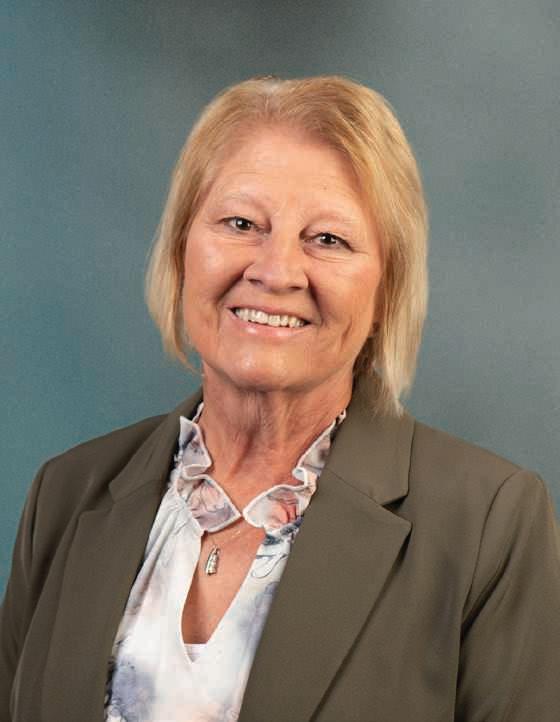

Jacob Boyko jacob.boyko@sdrea.coop
On a brisk spring morning, balls of dough rise hours before the sun. One at a time, they’re placed onto a press and flattened before being positioned into tins.
Carefully, Lori Pietz ladles custard overtop, sprinkles in fruit, and passes off a tray of the desserts to her husband, Roger, for baking. As Roger pulls open the door of the stainless steel commercial oven, a wave of heat emanates across the kitchen. He slides the tray of five desserts onto a shelf in the oven, then removes another tray and sets it aside to cool before they begin packaging.
Roger and Lori will repeat this process at least 100 more times this morning to keep up with their customers’ orders.
In the town of Scotland, northwest of Yankton, Pietz’s Kuchen Kitchen & Specialties is one business that has turned South Dakotans’ love for kuchen – a
delectable unification of cake, custard and pie – into a thriving business.
Kuchen, the German word for cake, has been a staple at European kitchen tables for centuries. The delicacy has stood the test of time, continuing to serve as a tea-time –or any-time – favorite across cultures and continents, especially right here in South Dakota.
“I think it’s because of the population, because the greatest proportion of immigrants (in South Dakota) are the Germans from Russia,” co-owner Lori Pietz said of kuchen’s popularity. “There are German areas, there are Czech areas, there are Norwegian areas — but there are a lot of Germans from Russia.”
Roger comes from one of those GermanRussian families where the tradition of baking homemade kuchen has been passed down for generations.
“I watched my mother make kuchen as a little kid,” Roger remembered. “I’d stand a little ways from the oven and I’d watch
her make it and I loved it.”
Staying true to his German-Russian roots, Roger’s love for kuchen never faded. After marrying Lori, Roger remembers telling her that if he could ever recreate his mother’s kuchen recipe, he could probably market it and sell it.
Owning a kuchen shop was always a retirement dream, the couple recalled. But after going through several farm accidents, the Pietzs’ decided to pivot in 2008. Trading plows for whisks, Pietz’s Kuchen became a reality.
The operation quickly outgrew their make-shift basement kitchen, so Roger and Lori opened up a storefront and commercial kitchen in the nearby town of Scotland in 2011.
Today, the store ships an estimated 2,500 kuchen monthly to grocery stores, butcher shops, and restaurants across South Dakota and the Midwest.
Roger and Lori’s kuchen offerings range from Americanized options –blueberry, peach, strawberry – to the more traditional blends of 18th and 19th century Europe, including rhubarb,
prune and cottage cheese.
Lori explained that historically kuchen was made using ingredients that were readily available, making it the ideal comfort-food and cultural dish for immigrants building their lives on South Dakota farms.
“There are a lot of Germans from Russia who brought rhubarb over with them, so they made a lot of rhubarb kuchen,” Lori said. “Flour and sugar were available, and they all had chickens and cows, so that’s kind of how it kept going.”
Lori didn’t grow up eating much kuchen. Her mother, who was of Czech descent, favored fluffy pastries called kolaches – filled with jam, poppy seeds or cream cheese.
But once Lori joined the Pietz family, she saw an opportunity to bridge both traditions. Drawing on the popularity of poppy seed kolaches in the Czech community, she created a Czech-inspired twist: poppy seed kuchen.
“There’s a lot of Czech people out there that like poppy seed kolaches,” Roger said. “And when they hear there’s poppy seed kuchen, they’re buying it.”
Kuchen’s footprint in South Dakota extends far beyond Scotland. Annual events like the Kuchen Festival in Delmont and Schmeckfest in Freeman invite locals and visitors alike to sample a variety of recipes and baking styles.
In McPherson County, the town of Eureka also has a reputation for being a kuchen-tasting hot spot, with several local kitchens offering their own takes on the dish.
South Dakotans’ love for kuchen runs so deep that it’s been codified into law; In 2000, State Sen. James Lawler, whose district included Eureka, helped lead the charge in Pierre to designate kuchen as the official state dessert.
Lawler, who once served as a judge for a local kuchen contest in Eureka, said the bill was part of a broader push to support local industries and breathe new life into small towns.
“The town of Eureka really got behind me and supported that bill,” Lawler recalled. “Those women up there got together and made enough kuchen for the whole legislature, and we fed them all and got the bill passed.”
A framed commemorative print of that bill hangs on the wall by the checkout counter in Roger and Lori’s shop – a tribute to all of the kuchen fans who have made their business what it is today.
“If you asked me 15 years ago what our business was going to be…I’d have said we’d sell a few,” Roger laughed. “I thought if it flopped, my friends would buy some from me and they wouldn’t let me down. Never did I anticipate this. Never. It’s just unbelievable.”

In the 18th and 19th centuries, Russian leaders made an appeal to German families to emigrate to Russia, promising land, religious freedom and military service exemptions.
According to the Prairie Public Broadcasting documentary, The Germans From Russia: Children of the Steppe, Children of the Prairie, the first wave of German immigrants arrived in 1764 during the reign of Catherine the Great. For Catherine, this was strategic; adding population to the sparser areas of her empire not only developed Russia’s agricultural economy, but also helped create a buffer against invaders from central Asia.
The settlements dotted the Volga River in Russia and the Black Sea in modern Ukraine and Crimea. The German villages closely resembled the communities they left behind as well as the ones they’d later build on the American prairie, with distinct churches and earth-brick houses.
While the Germans held onto their language, culture, and customs, Slavic influence gives the Germans from Russia a distinct identity. One notable difference is in their kuchen. While the traditional German dish resembles a yeast-based fruit cake, the eastern version is typically richer and made with custard.
Later in the 19th century, the special privileges German settlers had been granted were slowly being eroded. The Germans’ special status was lowered to that of common peasants, they could now be drafted into the Russian army, and were forced to assimilate to the Russian language and education system.
Many German settlers left their villages in Russia to start over once again in North America and South America, while those remaining in Russia would go on to suffer through civil and world wars and the man-made Holodomor famine during the 20th century.
The Germans who had settled the banks of the Volga River went on to populate large swaths of Nebraska, Kansas and Colorado, while the Germans from the Black Sea region primarily settled the Dakota Territory and Canada – bringing kuchen with them.
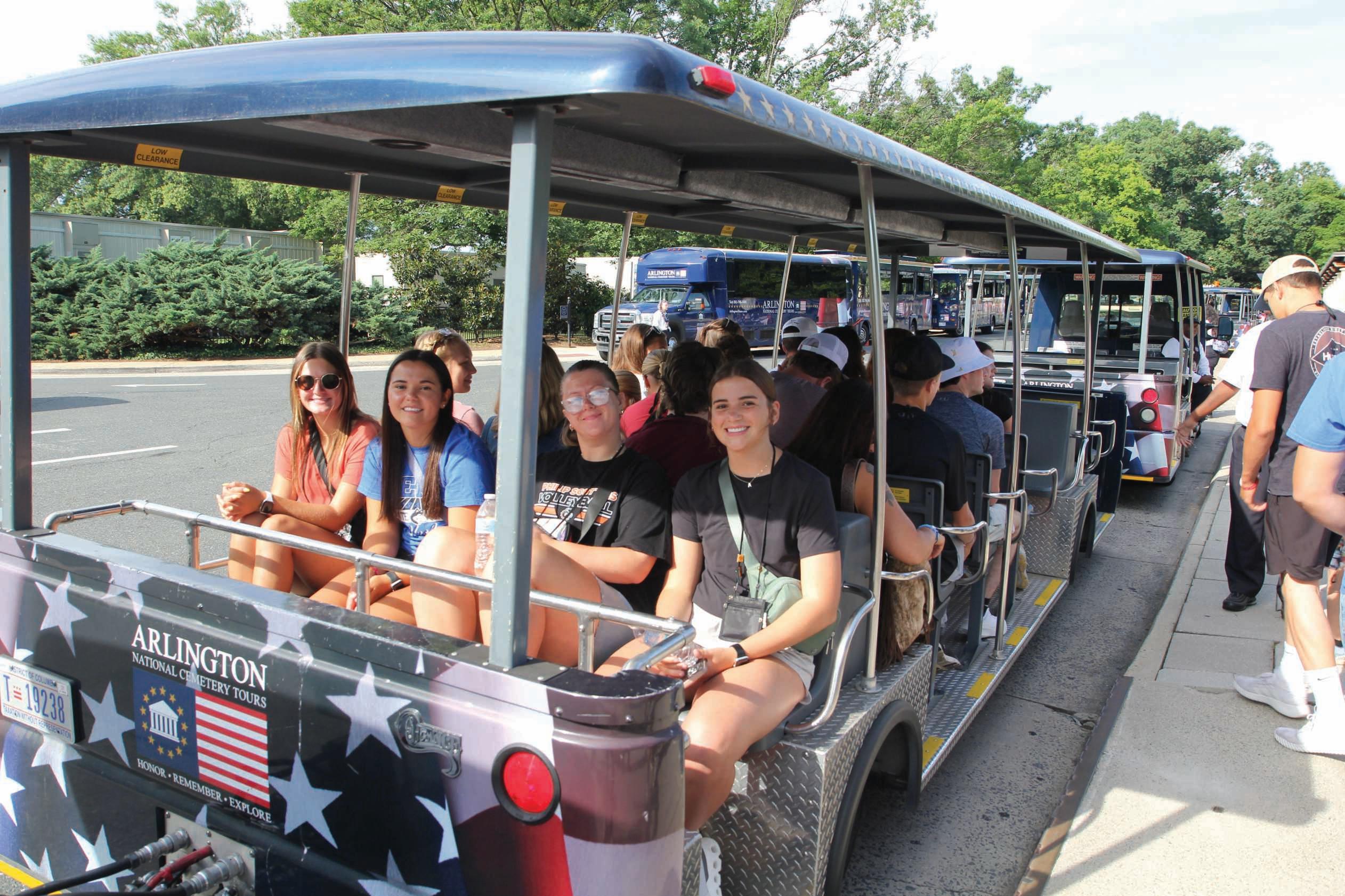



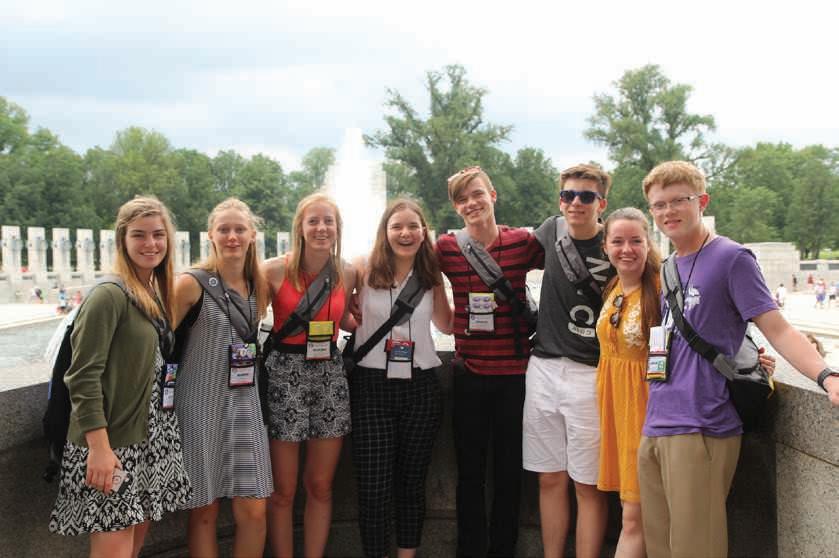



A trip to Washington, D.C., for a unique leadership experience.
A visit to Basin Electric, where you’ll see the cooperative business model in action.
Scholarships to support your future academic goals.






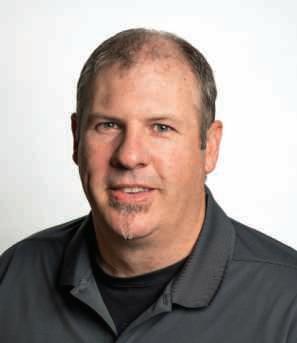
Brendan Nelson Operations Superintendent
As the warmer weather moves in and spring approaches, the list of spring projects start to generate. We want to remind you as you head outdoors to start on landscape or other yard projects to call before you dig. This will help eliminate any risk of injury, possible fines or cost to repair any underground utility damages.
Whether the project is perceived to be large or small, utility locates should always be called in. Some project examples are excavation

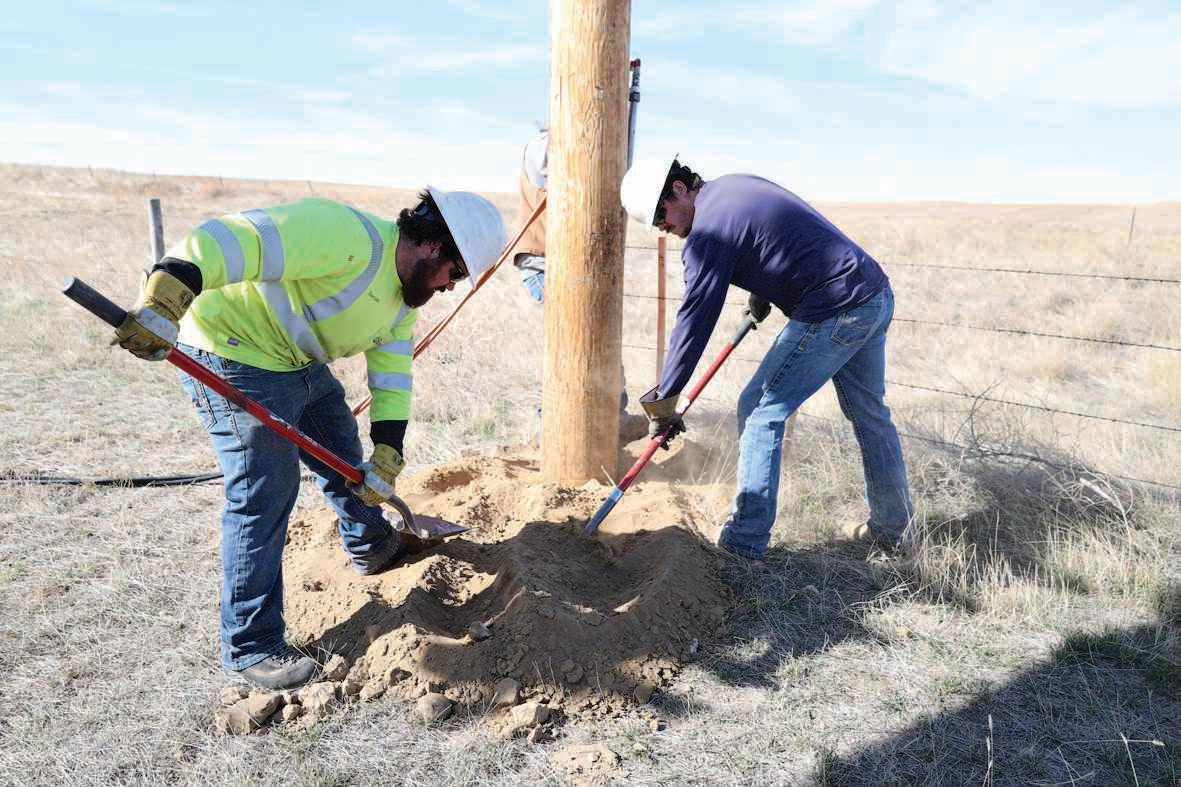
around your foundation, footings for a new deck, putting up a fence, replacing the mailbox posts or planting flowerbeds, shrubs or trees. Buried utilities are everywhere, and due to prior excavation, erosion or just improper installation in the first place, they may be a couple inches below the ground. Therefore, it is crucial to call before you dig. 8064300
Before putting a shovel, backhoe, or excavator in the ground, call 811 at least 48 business hours before you begin your project. This is the national call-before-you-dig number, and it is a free service available to you. Simply dial the 811 number or go directly to call811. com to submit a request. Have the address of where you plan to dig handy, including the county and nearest cross street to ensure exact location. You will also need to have the type of project you are completing and the exact location on the property of where you will be performing the project. Whether you are calling 811 or submitting a request online, you will need the same information for both.
Once 811 has been contacted, now you wait. All utilities will respond to your request and mark the necessary utilities within your project territory. Once all utilities have been marked, carefully hand dig at least 18 inches around the marked utility to ensure you won’t hit the lines with the big digging equipment.

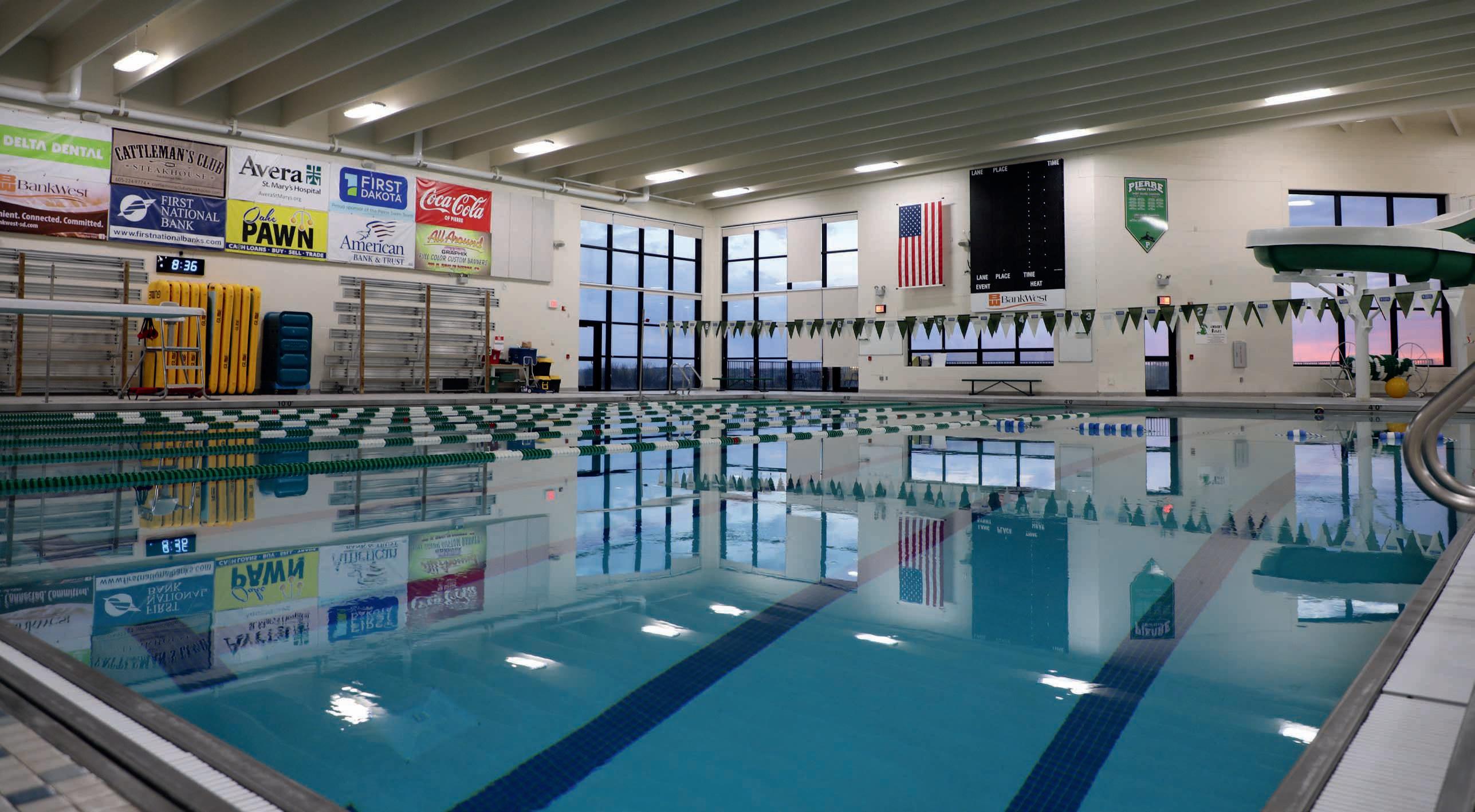
Jacob Boyko jacob.boyko@sdrea.coop
The leading cause of death for American children under the age of five: drowning.
The U.S. Centers for Disease Control and Prevention estimates 4,000 fatal drownings occur each year in the U.S., with the number of deaths sharply increasing in May and reaching a peak in July.
And according to Consumer Affairs, that number has been on the rise since 2020, especially among young children.
Whether at a waterpark, lake, backyard pool, or even a hot tub, being safety-aware and educating others can prevent drownings and other pool accidents and save lives.
According to Holly Hardy, aquatics director for the Oahe Family YMCA in Pierre, safety begins with supervision.
“Somebody should always be observing the water when there are kids in a pool,”
Hardy said. “It doesn’t matter if it’s our (YMCA) pool, a backyard pool, or the river. There needs to be a person there that’s responsible for watching the kids.”
At the YMCA’s pool, lifeguards who aren’t sure about a child’s swimming skills can have them do a swim test, where the child has to either show they can swim the length of the pool or remain in the shallow end.
“At our (YMCA) pool, we have those big slides and kids want to go down them because their buddies are going down them, and they want to go down but they can’t swim,” Hardy explained. “That’s where we pull the most people out of the water – the slide or the diving board.”
The YMCA lifeguards also have a rule against seeing how long you can hold your breath – children can hyperventilate before submerging and faint, which is called a
hypoxic blackout. Hardy also stresses the importance of swimming lessons, since understanding basics like how to float, swim, exit water and feeling oriented and calm are critical for water safety. She recommends to begin swimming lessons as soon as possible – The YMCA offers swimming lessons for children as young as six months old.
But swimming lessons are not a substitute for properly securing a pool.
According to Consumer Affairs, 87% of fatal drownings for the 0-5 age range occur in backyard pools.
That’s why a sturdy fence and selflatching gate around the pool area are still essential for preventing accidents. Even temporary mesh fence options can work in some instances.
Additionally, submersion alarms and door alarms can audibly alert you when someone enters the pool or pool area. By communicating the pool safety rules to children and guests, as well as taking preventive measures to prevent accidents in the first place, you may be saving lives.
• All children should be under responsible adult supervision.
• Designate “water watchers” and minimize distractions.
• Keep a phone close by for calling 911.
• Always swim with a buddy – Never alone.
• Keep throwing equipment or reaching equipment nearby.
• Consider CPR training – it could save a life.
Can everybody in the pool swim?
• Ensure everyone in the pool can at least swim from one end of the pool and back.
• Weak or new swimmers should keep to shallow water and use flotation aids.
• Parents should stay close – preferably within arm’s reach – to weak or new swimmers.
• Sign up for swimming lessons – it’s a lifesaving skill.
• Install and maintain a proper fence and selflatching gate around the pool.
• Consider a door alarm and pool alarm for an audible alert when someone enters the pool or pool area.
• Hot tubs should have properly-latched covers.
Recognize hazards.
• Stay away from drains and water intake pipes, as body parts, hair, jewely, and loose clothing can get pulled in. Drains should have anto-entanglement drain covers, and pumps should have accessible shut-offs.
• Ensure tiles, handrails, anti-slip pads, and ladders are properly installed and maintained.
• Electrical work should be done by a qualified electrician. Chargers, extension cords and other electronics should be kept away from the pool area.
• Check your pool water regularly to avoid illness from contaminents and chemical burns.
• Avoid slips and falls by picking up pool toys and other hazards. Do not run or roughhouse near the pool.
• If you’re not sober, don’t swim.
• Diving can result in serious injury. Make sure others know when a pool is not safe for diving.
• Store pool chemicals and additives somewhere inaccessible to children.
• Ensure proper lighting is installed around the pool area and never swim in the dark.
• Consider an animal escape ramp for pets and wild animals.
Establish pool-safe rules for your children and any guests at your home. Remind your children to...
• Never swim without permission and supervision. Other children are not supervisors.
• Don’t enter a pool area or go near water alone.
• Never roughhouse or run in the pool area.
• Never dive in shallow water.
• Stay away from chemicals and additives.
• Keep the pool area tidy and hazard-free.
• Keep electrical devices and cords away from the pool area.
• Never hyperventilate or try and see how long you can hold your breath underwater. Hyperventilating can induce fainting, called hypoxic blackouts and lead to drowning.
SHINING THE LIGHT ON WEST RIVER ELECTRICS DEDICATED EMPLOYEES

WAREHOUSE AND FACILITY TECHNICIAN

HOW LONG HAVE YOU BEEN WORKING WITH WEST RIVER ELECTRIC?
WHAT DOES YOUR JOB ENTAIL?
A
WHAT DO YOU LOVE MOST ABOUT WEST RIVER ELECTRIC?
I
WHAT IS YOUR FAVORITE MEMORY SINCE STARTING WORK AT WEST
RIVER ELECTRIC? down the line into the badlands where an old structure of ours was replaced with a 60’ laminate pole this past February.
My favorite memory since working at West river electric was getting to walk
HOW WOULD YOU DESCRIBE WEST RIVER ELECTRIC IN THREE WORDS?
H i g h p e r f o r m i n g C o - o p .
WHAT MOTIVATES YOU TO GET UP AND GO TO WORK EVERY DAY?
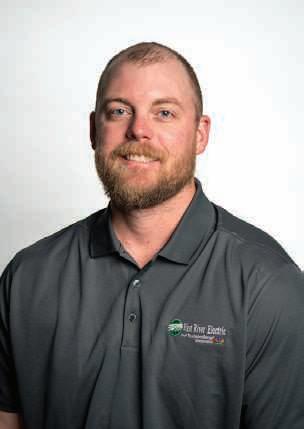
STAKING TECHNICIAN
HOW LONG HAVE YOU BEEN WORKING WITH WEST RIVER ELECTRIC?
. WHAT DOES YOUR JOB ENTAIL?
l l o r a n e w b u s i n e s s c o m p l e x .
WHAT DO YOU LOVE MOST ABOUT WEST RIVER ELECTRIC?
c a r e a b o u t o n e a n o t h e r . W e a r e a l w a y s d o i n g o u r b e s t t o s e r v e t h e m e m b e r s a t
t h e b e g i n n i n g a n d a t t h e e n d o f t h e l i n e .
WHAT IS YOUR FAVORITE MEMORY SINCE STARTING WORK AT WEST RIVER
h e l p i n g t h o s e p e o p l e i n n e e d . I l o v e t h a t w e a r e a f a m i l y a n d I g e t t o w o r k w i t h g r e a t p e o p l e e v e r y d a y t h a t
HOW WOULD YOU DESCRIBE WEST RIVER ELECTRIC IN THREE WORDS?
M i n d f u l , t r u s t w o r t h y , h o n o r a b l e
WHAT MOTIVATES YOU TO GET UP AND GO TO WORK EVERY DAY?
1 T i m o t h y 5 : 8
“ B u t i f a n y o n e d o e s n o t p r o v i d e f o r t h e i r r e l a t i v e s , a n d e s p e c i a l l y f o r t h e i r o w n h o u s e h o l d , t h e y h a v e d e n i e d t h e f a i t h a n d a r e w o r s e t h a n a n u n b e l i e v e r . ”

If you locate your account number anywhere in this issue of West River Electric’s Cooperative Connections, you will be a winner. There will be five account numbers placed randomly throughout the publication. If you spot your account number and notify our office before the 10th of the next month, you will receive a $10 credit on your next bill.
3250 E Hwy 44, Rapid City, SD
Monday-Friday 7 a.m. to 5 p.m.
605-393-1500
1200 W 4th Ave, Wall, SD
Monday-Friday 7 a.m. to 5 p.m.
605-279-2135
A night depository is available at both offices for your convenience.
Contact 605-279-2135 or 605-393-1500 during office hours. E-mail us at info@westriver.coop for questions on your account.
Contact 605-279-2135 or 605-393-1500 in the event of an outage or other emergency. Our calls are answered 24/7.

JUNE 19-21
Czech Days
Music, Dancing, Foods & Parades Tabor, SD
MAY 24-SEPT. 13
Buggy Museum
Free Buggy Rides + More Saturdays 10 a.m.-4 p.m. Stockholm, SD 605-938-4192
JUNE 5
Danish Constitution Day Celebration
To have your event listed on this page, send complete information, including date, event, place and contact to your local electric cooperative. Include your name, address and daytime telephone number. Information must be submitted at least eight weeks prior to your event. Please call ahead to confirm date, time and location of event.
6:15 p.m.-9 p.m. Danish Folk Dancing & Music Viborg, SD danevilleheritage.com
JUNE 5, 7
Wheel Jam
7 p.m.
Dakota State Fair Speedway Huron, SD
JUNE 6
Northern Bull Riding Tour
6:30 p.m. Madison, SD www.prairievillage.org
JUNE 6
Joy Fest
John Mogen Piano Performance 7 p.m. CDT Okaton, SD cristenjoyphotography.com
JUNE 6-8
SDHSRA Regional Rodeos Buffalo, Huron, Wall, Kadoka, SD www.sdhsra.com
JUNE 7
Car Show & Kids Carnival 11 a.m.-3 p.m. 202 2nd St. SE Watertown, SD
JUNE 7
Prairie Village Tractor Pull 3 p.m. Madison, SD www.prairievillage.org
JUNE 11
Agricultural Women’s Day 9 a.m.-4 p.m. Agar-Blunt-Onida School Onida, SD 605-769-0013
JUNE 12-14
Gumbo Ridge Wagon Train Murdo, SD 605-530-3638
JUNE 13-15
SDHSRA Regional Rodeos Dupree, Watertown, New Underwood, Winner, SD
JUNE 13-15
Ipswich Trail Days Ipswich, SD ipswichtraildays.com ipswichtraildays@gmail.com
JUNE 14
Roslyn Vinegar Festival Roslyn, SD 320-808-8873
JUNE 15, 29
1880 Train Old West Shootout 5 p.m. Hill City, SD
JUNE 17-21
SDHSRA State Finals Rodeo Fort Pierre, SD
JUNE 20-22
Farley Fest Milbank, SD 605-432-6656 www.farleyfest.com
JUNE 21
Hobby Horse Relay McCrossan Boys Ranch 1 p.m. Lake Lorraine Sioux Falls, SD
JUNE 21
Western SD Community Action 60 Years of Service Games, Crafts, Food, etc. 11 a.m.-3 p.m. 1844 Lombardy Dr. Rapid City, SD www.wsdca.org
JUNE 25-28
Crystal Springs Rodeo Clear Lake, SD 605-874-2996
JUNE 27-28
Buckhorn Rodeo Britton, SD 605-880-5077
Note: We publish contact information as provided. If no phone number is given, none will be listed. Please call ahead to verify the event is still being held.